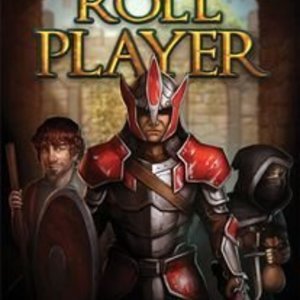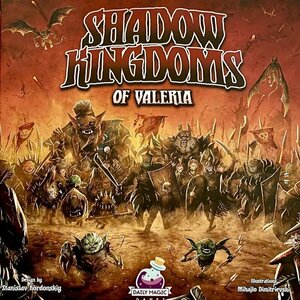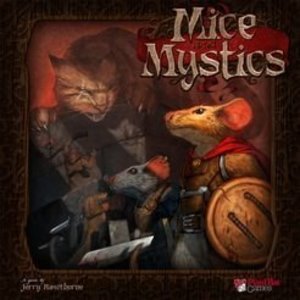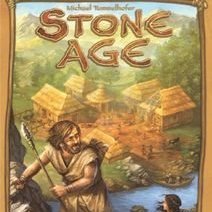
Cooking Customers
Tabletop Game
Play cards, roll dice and don't get fired! In Cooking Customers you will need to hire cooks to...
Lumos (380 KP) rated Roll Player in Tabletop Games
Mar 14, 2018

LUDO+ Family Board Game
Games
App
LUDO is the best way to spend quality time with your family! It is a game you will fall in love...

LUDO Family Board Game
Games
App
LUDO is the best way to spend quality time with your family! It is a game you will fall in love...
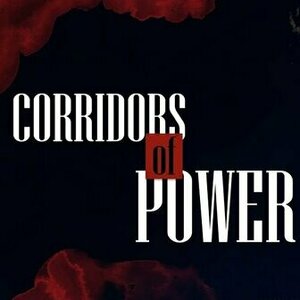
Corridors of Power
Tabletop Game
Corridors of Power is a social game on the heavier side, with a political theme, in which players...

DC Universe Roleplaying Game
Tabletop Game
The DC Universe Roleplaying Game is a Legend System-based role-playing game set in the DC Comics...
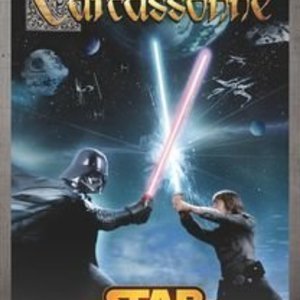
Carcassonne: Star Wars
Tabletop Game
A version of Carcassonne with roads replaced by Hyperspace lanes, cities by asteroid fields and...
Purple Phoenix Games (2266 KP) rated Shadow Kingdoms of Valeria in Tabletop Games
Jan 5, 2022
Shadow Kingdoms of Valeria is a game of worker placement and dice drafting/pool building in which players are trying to amass the most VP by the end of the game. Played over a series of rounds, players will take turns moving their Warden, drafting dice, and performing various actions. To setup, place the main board in the center of the play area. Shuffle and place the Battle Plan deck, Award cards, and Champion decks in their corresponding locations. Fill the dice bag with the requisite number of dice for your player count, and draw/roll/place the listed number of dice in each of the 5 Shrines (areas) of the main game board. A specified number of Gems are placed in the appropriate Shrine, and each player places their score marker on the 0 space of the score track. Each player receives a player board, random Campaign Map, Warden and Conquest Markers in their chosen color, as well as markers for Gold, Influence, and Magic. Choose a starting player, and the game is ready to begin! The setup for a 2-player game is pictured below.
On your turn, you will move your Warden from its current location to one of the other 5 locations on the board. Whichever location you choose dictates what actions you may take this turn, and are as follows: Gem Shrine, Magic Shrine, Champions Shrine, Gold Shrine, Tactics Shrine, or your own Camp. When placing your Warden at any location (with the exception of your own Camp), you will first select one of the dice found at that Shrine and place it on an open space of your player board. You may not move to a Shrine if it has no dice! After taking a die, you may perform the action associated with your chosen location. The Gem Shrine allows you to take 1 Gem, which can be used to manipulate dice in future turns. At the Magic Shrine, you may gain 2 Magic or claim 1 Award card. Magic can be spent in the game to manipulate dice or partially refresh the Champion/Battle Plan decks, and Award cards give you VP and can be claimed once you have met their requisite conditions. The Champions Shrine grants you the opportunity to buy a Champion card. Champions can provide either Immediate, Ongoing, or End-Game effects. The Gold Shrine allows you to gain Gold (used to purchase Champions and Battle Plans), and the Tactics Shrine allows you to buy a Battle Plan to be placed in your reserve on your player board.
The final location, your own Camp, is on your player board. When you place your Warden here, you are committing to perform a Battle. To do so, select which Battle Plan you wish to complete (either from your reserve, or pay Gold to buy directly from the Battle Plan line), and place it on your player board. All Battle Plans have certain dice requirements that need to be met in order to be completed. Select and manipulate which dice you want to use for your chosen Battle Plan, and add up your total Strength. Compare your Strength to your Influence marker – the lower of the two will be your total strength for this battle. Check the chart on your player board to find the number of VP you earn for the total Strength level achieved in the Battle, and immediately move your score marker the appropriate number of spaces. After performing a Battle, you get to level up your player board. During the game setup, each player receives 10 Conquest Markers that are housed on their player board, blocking/locking certain bonuses, abilities, and dice slots. After a Battle, you may remove 1 Conquest Marker from your player board (granting you a new bonus/ability for future turns), and place it on your Campaign Map. Campaign Maps have nine different slots that will grant you differing rewards. Once you have moved your Conquest Marker, return all dice used in this Battle to the dice bag, and move your completed Battle Plan card to the side of your player board. Your turn then ends and the game moves to the next player.
The game continues in this fashion, with players moving their Wardens, collecting dice, and performing actions, until one player has completed their 7th Battle Plan. The round continues until all players have had an equal number of turns, and then players add up any remaining VP. The player who has accumulated the most VP is then declared the winner!
It really should come as no surprise to you that I love this game. Beyond just the Valeria-verse theme, though, the gameplay is more strategic than I originally thought. Yes, it’s a worker placement and dice drafting game, but the underlying strategy is really what makes it great. You see, the dice in the game have 3 different elements that affect your strategy. First is the color: each color matches a Faction, and different Factions are required to complete specific Battle Plans. Next, is the actual die value: you want higher numbers to get a higher Strength, which equates to more VP when completing Battle Plans. And lastly is the discount: depending on the face value of the die, you will receive a discount towards purchasing Champions, Battle Plans, or collecting gold. The lower the face value of the die, the higher the discount, and vice versa. So yeah, maybe taking a 1 value die won’t really help in the Battle Plan, but the amount of gold it allows you to collect might be worth it. You have those 3 things to consider for dice alone! And that doesn’t even take into account which Champions you might want to buy, or what Battle Plans would be beneficial to you.
Another neat strategic element are the Conquest Markers on your player board. Everyone starts with the same number/placement of Conquest Markers, but as the game progresses, players may resolve them in various ways. There is no ‘correct’ order in which to move Conquest Markers – it all comes down to your strategy. Maybe you want more dice right off the bat, so you remove those first. Or maybe you want to be able to reserve more than 1 Battle Plan at a time, so you go for that one. It’s going to be different for every player, and it’ll be different every game. It all depends on the layout of the main board, and which dice and actions are available to you at any given time. There are so many strategic considerations throughout the entire game, and it keeps all players actively engaged.
Components. No surprise here, but the component quality is great, which is to be expected of Daily Magic Games. The cardboard is all thick and chunky, the wooden tokens nice and sturdy, and the cards are easy to manipulate and clear to read. The artwork is, in my opinion, one of the greatest things about the Valeria games, and Shadow Kingdoms is no exception. When getting the game set up, sometimes I find myself just looking through the cards and really appreciating the artwork. So all in all, great production quality here.
Does Shadow Kingdoms of Valeria climb the ranks to my favorite Valeria game? Not quite, but I have to say honestly that it’s getting there. The gameplay is solid and straightforward, the strategic implications are vast, and the components make the game feel awesome. And to get the Monster perspective in this universe is a neat twist that I otherwise would not really have thought of. If you’re a fan of the Valeria games, definitely check this one out. Or if you’re just a fan of worker placement, with some unique elements of drafting, then I highly recommend this one as well. Purple Phoenix Games gives it a mighty 5 / 6. Check it out. I don’t think you’ll be disappointed.
Parfs (178 KP) rated Mice and Mystics in Tabletop Games
May 21, 2019
Entertainment Editor (1988 KP) rated Stone Age in Tabletop Games
Mar 7, 2018 (Updated Mar 7, 2018)
Reviewer: Farmerlenny
Read the full review here: http://islaythedragon.com/game-reviews/a-rolling-stone-gathers-no-moss-a-review-of-stone-age/
